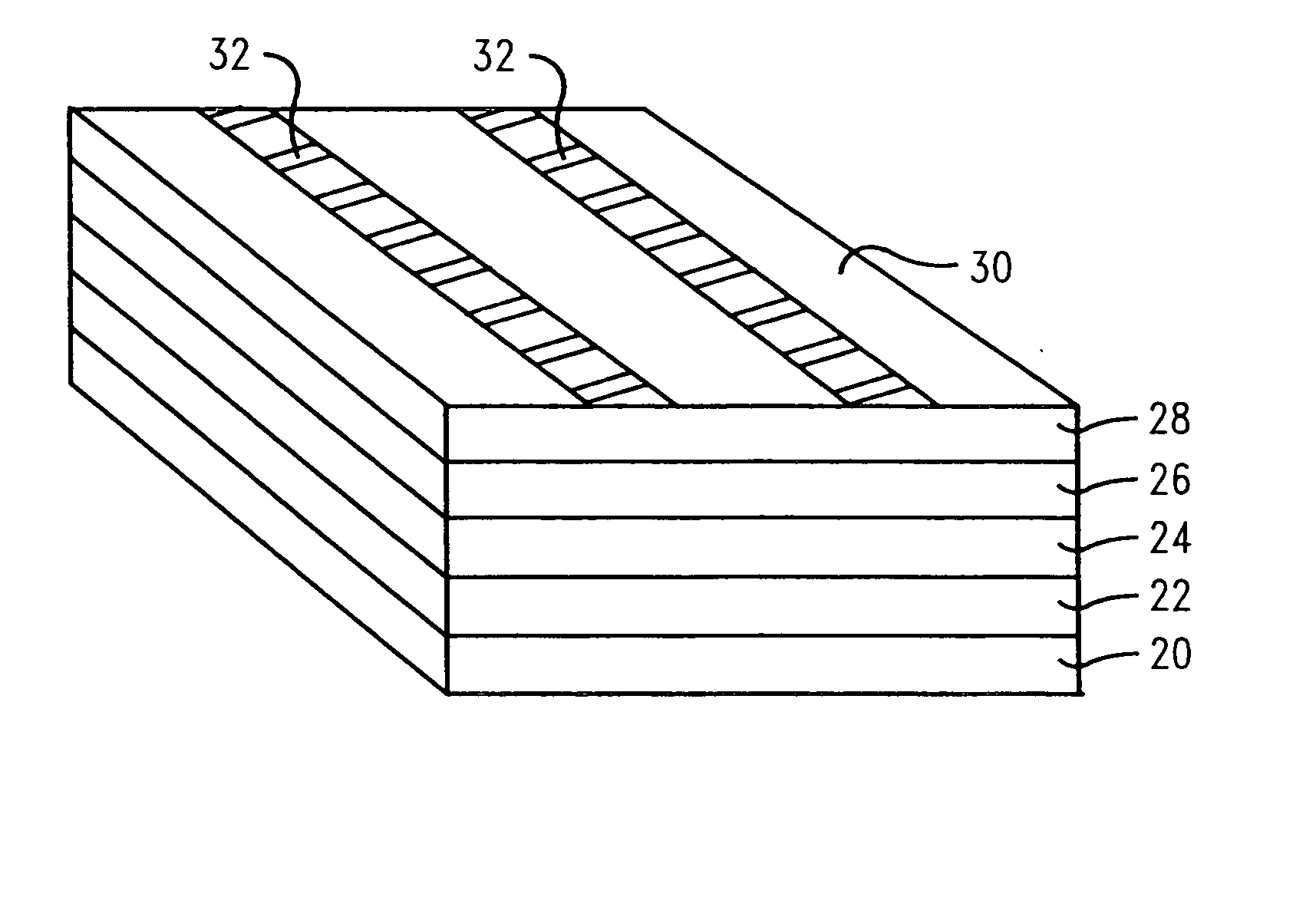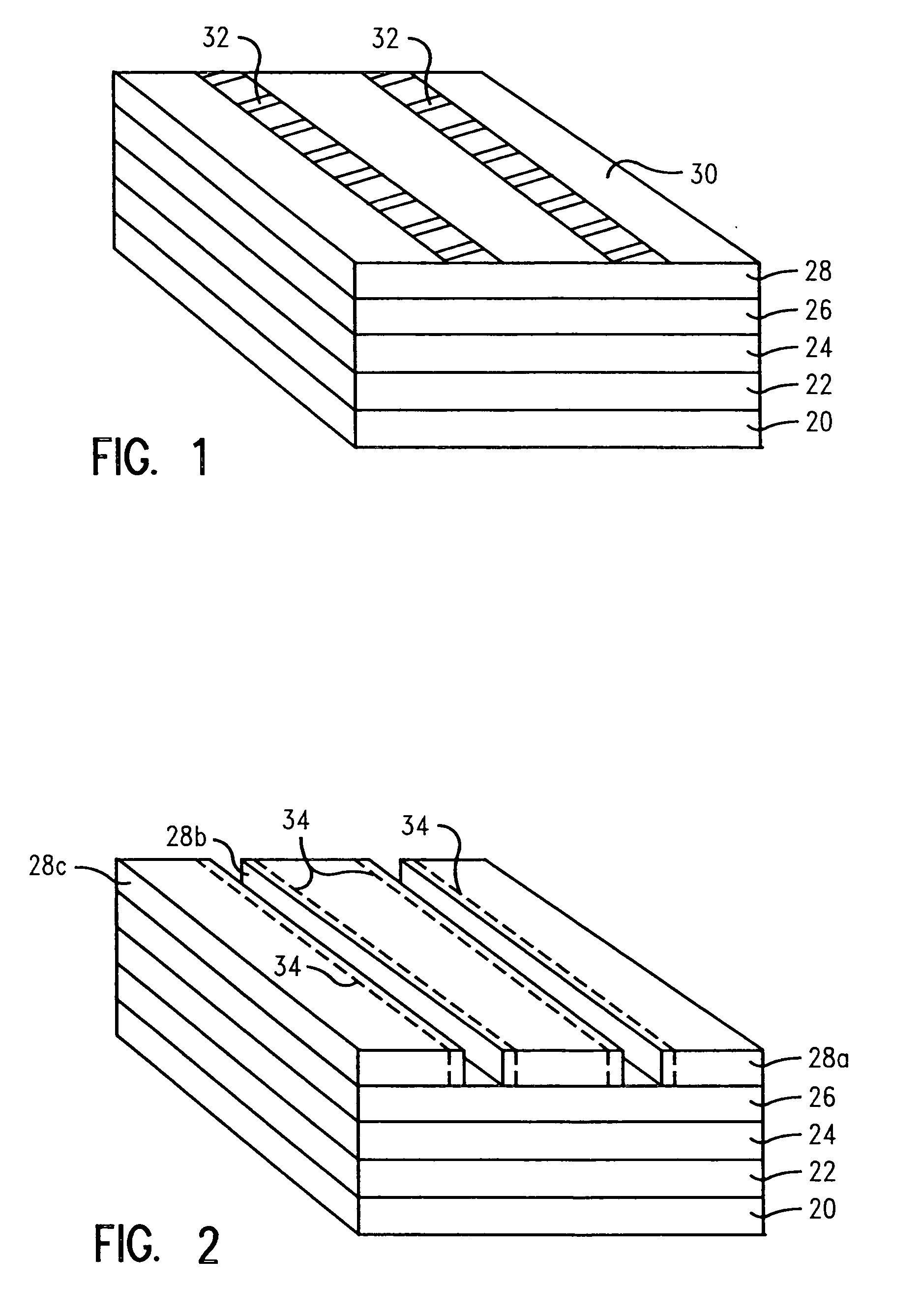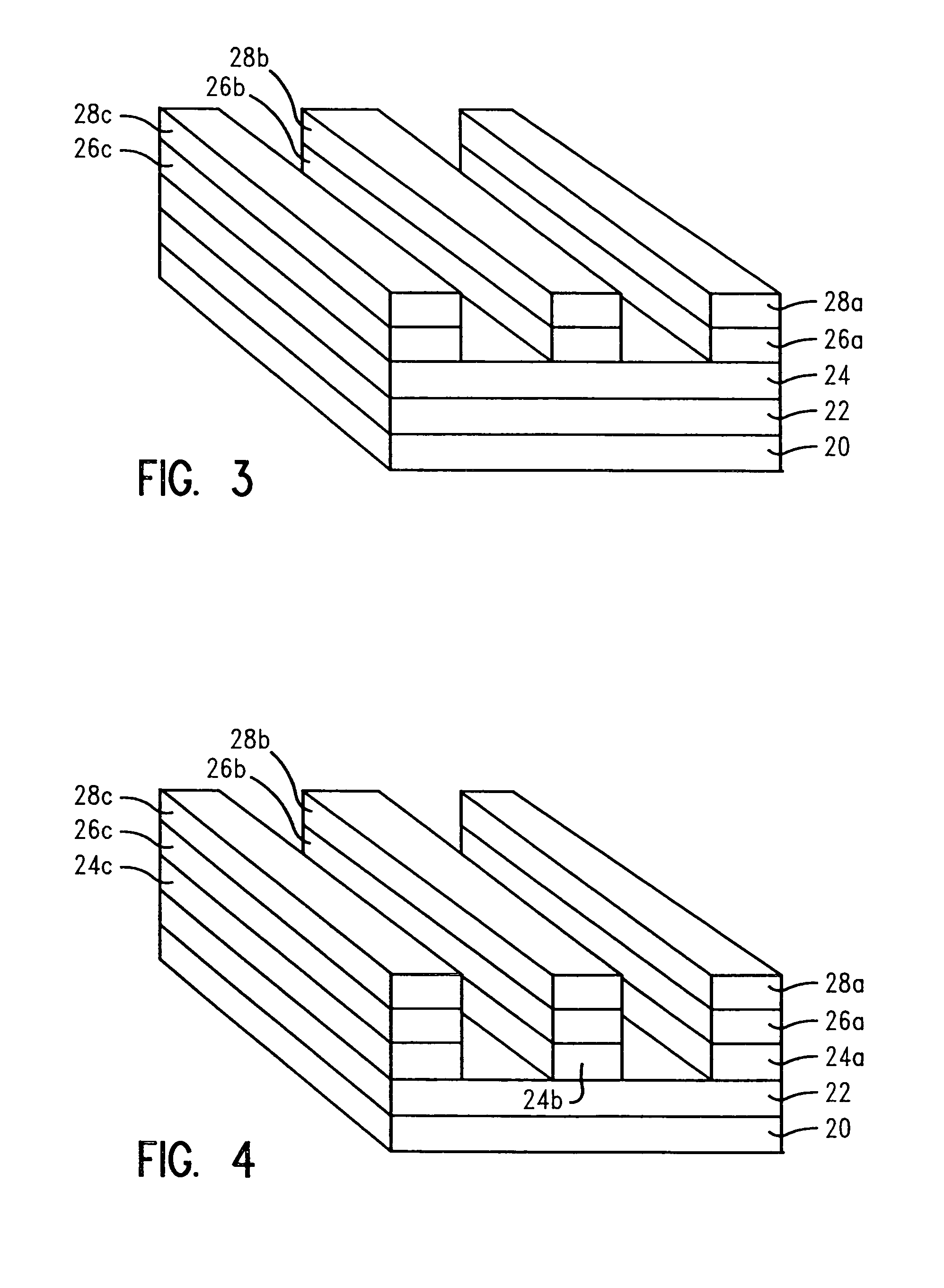Method for reducing feature line edge roughness
a technology of feature line edge roughness and lithography, applied in the field of lithography manufacturing processes, can solve the problems of copper voiding, difficult to obtain conformal liner coverage, and inability to achieve excessive line edge roughness in the final etched feature, etc., and achieve the effect of reducing line edge roughness
- Summary
- Abstract
- Description
- Claims
- Application Information
AI Technical Summary
Benefits of technology
Problems solved by technology
Method used
Image
Examples
Embodiment Construction
(s)
[0024] In describing the preferred embodiment of the present invention, reference will be made herein to FIGS. 1-6 of the drawings in which like numerals refer to like features of the invention.
[0025] The present invention enables the reduction of the line edge roughening phenomenon of the final etch feature by curing the resist layer prior to or during the etch step. During conventional etching processes, high ion bombardment energies can facet and roughen resist features, such that the roughness may transfer into the substrate. The method of the present invention allows the patterning of smoother features without disrupting the existing process flow. The benefits achieved herein are over and above those obtained by optimizing the existing lithography and etching steps.
[0026] The present invention uses resist curing as a method to reduce roughening the resist during etch, which typically then translates to smoother etched profiles in the substrate. Line edge roughness reductio...
PUM
 Login to View More
Login to View More Abstract
Description
Claims
Application Information
 Login to View More
Login to View More - R&D
- Intellectual Property
- Life Sciences
- Materials
- Tech Scout
- Unparalleled Data Quality
- Higher Quality Content
- 60% Fewer Hallucinations
Browse by: Latest US Patents, China's latest patents, Technical Efficacy Thesaurus, Application Domain, Technology Topic, Popular Technical Reports.
© 2025 PatSnap. All rights reserved.Legal|Privacy policy|Modern Slavery Act Transparency Statement|Sitemap|About US| Contact US: help@patsnap.com



